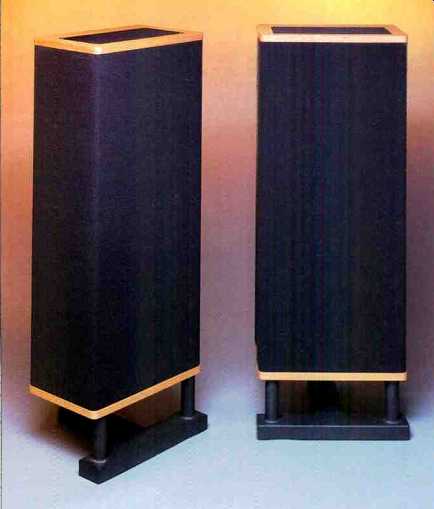
Manufacturer's Specifications:
Drivers: 10- and 8-in. cone woofers, 4 1/2-in cone midrange, and 3/4-in. metal-dome tweeter.
Frequency Response: On axis, 28 Hz to 29 kHz, ±3 dB, or 32 Hz to 21 kHz, ± 1.5 dB; 90° off axis, 29 Hz to 16 kHz, ±3 dB.
Sensitivity: 88 dB SPL at 1 meter with 1 watt of pink noise applied.
Crossover Frequencies and Filter Characteristics: 600 Hz (6 dB/octave, Butterworth) and 5 kHz (6 dB/octave, Linkwitz-Riley).
Impedance: 7 ohms, ±3 ohms, from 100 Hz to 20 kHz; 4 ohms minimum.
Recommended Amplifier Power: 40 to 160 watts per channel.
Dimensions: 16 in. W x 36 1/2 in. H x 10 1/4 in. D (40.6 cm x 92.7 cm x 26 cm); optional base, 16 1/4 in. W x 6 1/4 in. H x 13 3/4 in. D (41.3 cm x 15.9 cm x 34.9 cm); Model 2Ce (see text), 16 in. W x 39 3/4 in. H x 10 1/4 in. D (40.6 cm x 101 cm x 26 cm).
Weight: 63 lbs. (28.6 kg) each; Model 2Ce, 60 lbs. (27.2 kg) each.
Price: $1,295 per pair; optional bases for Model 2Ci, $125 per pair.
Finish: Oiled walnut or oiled oak; oak with black semi-gloss lacquer, $50 extra.
Grille: Black, brown, or taupe fabric.
Company Address: 116 West Fourth St., Hanford, Cal. 93230.
Vandersteen Audio's Model 2 series has been in continuous production, with updates, since 1977. As this review goes to press, the 2Ci version that I tested is being superseded by the 2Ce, in a taller and narrower cabinet designed to improve the system's appearance. The new cabinet should extend low-frequency performance slightly, but other aspects of performance should remain the same.
Vandersteen has always had a good reputation for producing relatively inexpensive systems with high-end aspirations. The company pioneered the use of so-called baffle-less driver mountings-a misnomer, actually, as the drivers are mounted in small, individual enclosures with minimum frontal area, stacked one on top of the other. Richard Vandersteen points out that a speaker can be considered as baffleless--that is, omnidirectional--at any frequency whose wavelength is more than four times the enclosure's largest horizontal dimension. This design, along with smoothly contoured front baffle surfaces, is said to "virtually eliminate the negative effects of diffraction and refraction." Other systems using this technique are the KEF 107 (Audio, Feb. 1988) and the B & W 801 Matrix Series 2 (Nov. 1990).
To maintain proper time and phase response, the individual sub-enclosures of all Vandersteen full-range systems are staggered backward, and pure first-order crossovers are used. The direct sound from this type of design is minimum-phase (having no phase anomalies not directly related to frequency response) and thus preserves time waveshapes if the response is sufficiently flat.
The construction of the 2Ci is quite unusual: What appears to be a conventional, rectangular enclosure on the outside is actually a grille cloth wrapped around a frame that supports the assembly of three enclosures housing the system's drivers and crossover. This construction technique is economical, because only the top and bottom plates of the cabinet have furniture finishes. Some sound also escapes through the top panel, via a 5 x 12-inch grille.
The top and bottom panels are separated by four wood dowels, 1 1/4 inches in diameter, that form the outside of the frame. The inside enclosure assembly is mounted to the lower panel and rigidly attached to the dowels with a bracing panel that runs around the top of the woofer enclosure.
The low-frequency system incorporates two woofers, an 8-inch unit mounted on the top front of the woofer enclosure and a 10-inch "acoustic coupler" mounted on the bottom rear of the same enclosure. Both drivers are mounted in a sealed, common air chamber.
Both woofers have die-cast baskets. They use multi-layer voice-coils, 1 1/2 inches in diameter, on ventilated aluminum-coil formers. The front woofer has a curvilinear cone made from a plastic material Vandersteen calls "polycone." The rear woofer, which covers the range from 28 to 35 Hz, has a damped long-fiber paper cone with an added 5 1/4-inch-diameter wooden disc covering its center to increase the mass and stiffness of the driver.
On the top of the woofer enclosure is a smaller enclosure, set back somewhat and slanted upward, housing the 4 1/2-inch midrange. This speaker also has a curvilinear plastic cone but with an unusual flat surround rather than the typical half-roll surround; this is said to minimize surround reflections. The tweeter, which has a damped metal dome, 3/4 inch in diameter, is in its own enclosure, atop the mid range enclosure. The front is covered by a felt shroud that drops down to the top front of the midrange enclosure. This shroud serves to minimize reflections from the face of the tweeter enclosure and from the top of the midrange box, which is exposed because of the tweeter enclosure's offset to the rear.
Vandersteen highly recommends using the 2Ci on its optional metal base, which can be filled with sand to add weight and damping. The base also elevates the system to the proper height for the ears of a seated listener.
Wire-wound level controls for the midrange and tweeter are on the rear of the speaker. Connection to the system is through two pairs of banana jacks (not the usual five-way binding posts) on the rear, providing separate access to the mid/high- and low-frequency sections of the system. This facilitates bi-wiring. As the jacks cannot accept wire or spade lugs, Vandersteen supplies two double-banana plugs for the user to wire up.
Measurements
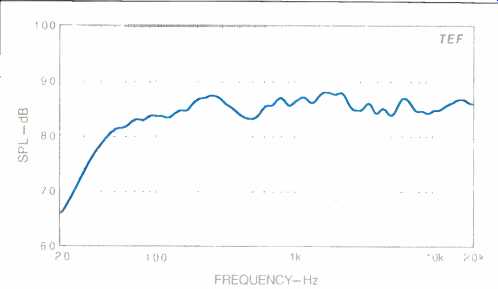
Fig. 1-One-meter, on-axis, anechoic frequency response, for an input of
2.83 V rms, equivalent to 1 watt into 8 ohms.
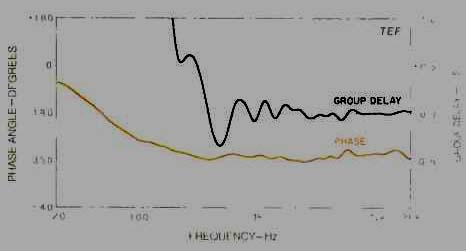
Fig. 2-On-axis phase response and group delay, corrected for tweeter and
midrange arrival time.
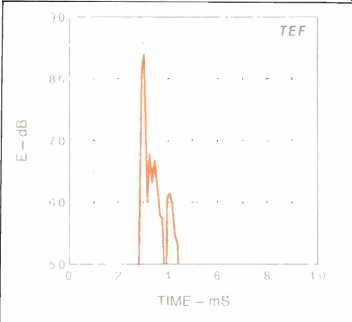
Fig. 3-One-meter, on-axis energy, time curve.
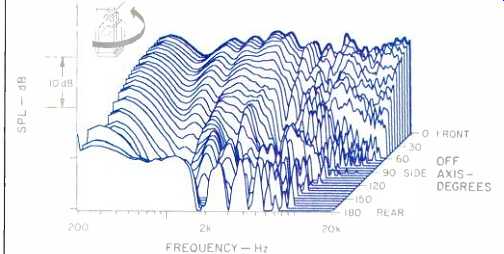
Fig. 4-Horizontal off-axis frequency responses, taken from the front, around
the side, and to the rear of the speaker.
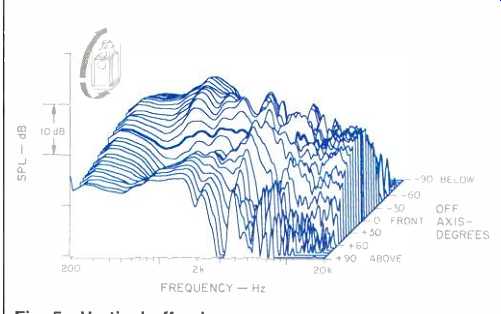
Fig. 5-Vertical off-axis frequency responses, taken from below, up the front,
and to the top of the speaker.
Figure 1 shows the anechoic on-axis frequency response of the Vandersteen 2Ci. Measurements were taken at 2 meters, 36 inches from the bottom of the system's optional base, with 2.83 V rms applied, and then referenced to 1 meter. The response below 300 Hz was derived from ground-plane measurements taken at several points around the system. The rear-mounted bass radiator mandated these multiple measurements, all of which were taken with the midrange and tweeter controls set to the "0 dB" mid position.
Salient points of the on-axis curve include a somewhat rough overall response, a gentle peak-dip combination at 250 and 500 Hz, and a sensitivity of 86 dB (averaged over the four-octave range from 250 Hz to 4 kHz), moderately lower than rated. The curve fits within a fairly tight, ±2.5 dB window from 70 Hz to 20 kHz and is 10 dB down at 35 Hz.
Below 40 Hz, the response rolls off at about 18 dB/octave. A right/left comparison (not shown) revealed a close, ±0.5 dB match except for a narrow band between 3 and 4 kHz, where the levels differed by ± 1 dB. Note that all measurements were taken with the grille on, as it is not designed to be removed.
The phase and group-delay responses of the 2Ci, referenced to the midrange and tweeter arrival time, are shown in Fig. 2. The phase curve stays within an admirably tight envelope of about ± 45° all the way from 180 Hz to 20 kHz.
The careful alignment of the system's drivers, coupled with the design of the crossover, pays off here. The group delay is also commendably flat over the range from 600 Hz to 20 kHz, a further indication of how well the system is aligned.
The undulations between 400 Hz and 2 kHz, and the rise below 400 Hz, correspond not to driver misalignment but to minimum-phase aberrations caused by the non-flatness of the frequency response (including the system's bass roll-off). If the system were equalized flat with a minimum-phase equalizer, the phase and group-delay responses would also be corrected.
The system's energy/time response is shown in Fig. 3. The aligned nature of the 2Ci contributes to a very tight main arrival at 3 mS. The decay is marred only by some later arrivals, 17 and 22 dB down from the main peak. The space-frame construction may be responsible for some of these later arrivals.
Figure 4 displays the horizontal off-axis responses of the 2Ci; the on-axis curve is shown in bold at the rear of the graph. The horizontal coverage is quite good, as the on-axis curve's shape is carried over quite uniformly off axis. Even out to ± 45°, high-frequency coverage to 15 kHz or higher remains quite similar to the output on axis.
The vertical off-axis curves are shown in Fig. 5. In the center of the graph (front to rear), the on-axis curve is shown in bold, with the above-axis responses in the front of the display. The mostly flat on-axis response is partially obscured by off-axis aberrations.
Up/down asymmetries are clearly shown in the off-axis responses in the vicinity of the lower crossover, between 400 and 800 Hz, where the response above axis is de pressed and the response below axis is actually several dB higher than the on-axis response. This asymmetry is the main indication of strong lobing, which denotes that the acoustic phase difference between the woofer and mid range (or midrange and tweeter) approaches 90°. This asymmetrical behavior is a direct result of the first-order, 6 dB/octave crossovers used in the 2Ci. Other systems that utilize this type of crossover also exhibit very nonuniform, vertical off-axis behavior.
Figures 6 and 7, respectively, show the NRC-style mean horizontal and vertical on- and-off axis responses. The up per part of Fig. 6 also shows the individual on-axis curves that were averaged to yield the ± 15° on-axis curve, which is fairly smooth and quite similar to the on-axis response of Fig. 1. The composite on-axis responses group very close together (well within ± 1 dB over the whole range), which indicates excellent horizontal off-axis coverage in the primary angular listening range. The 30° to 45° mean response is similar to the on-axis curve but with reduced level from 2.5 to 7 kHz, the upper crossover range. Minimal roll-off above 10 kHz is noted. The 60° to 75° off-axis response, however, exhibits a deep hole at 3.5 kHz, with heavy roll-off above 8 kHz. The physical offset of the drivers, inherent in a staggered aligned-in-time system design, contributes to poorer horizontal off-axis response.
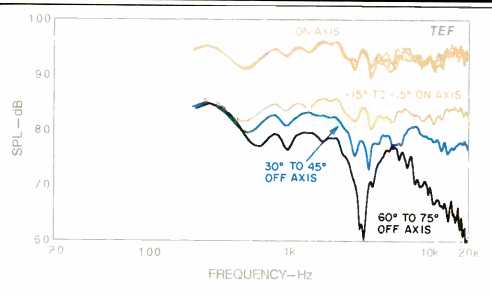
Fig.
6--Mean horizontal responses derived from data of Fig. 4 (lower set of curves)
and composite of horizontal responses from + 15° to-15°, taken every 5° (upper
set of curves). The upper set, which has been shifted up 10 dB for clarity,
was averaged to yield the +15° to-15° on-axis mean curve.
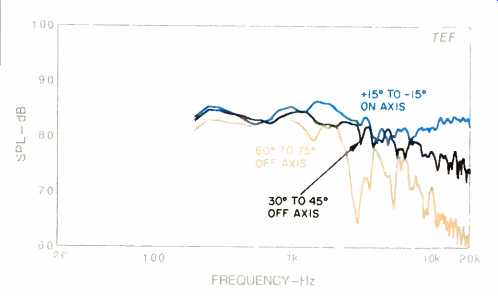
Fig. 7--Mean vertical responses derived from data of Fig. 5.
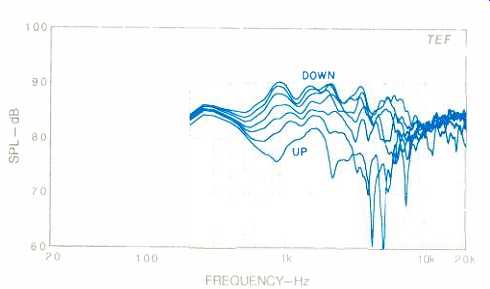
Fig. 8--Composite of vertical responses from + 15° to- 15°, taken every
5'. These responses were averaged to yield the vertical + 15° to- 15° on-axis
mean curve shown in Fig. 7.
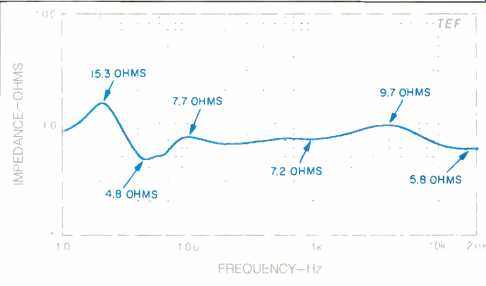
Fig. 9--Impedance.
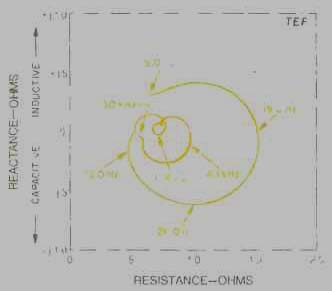
Fig. 10-Complex impedance, showing reactance and resistance vs. frequency.
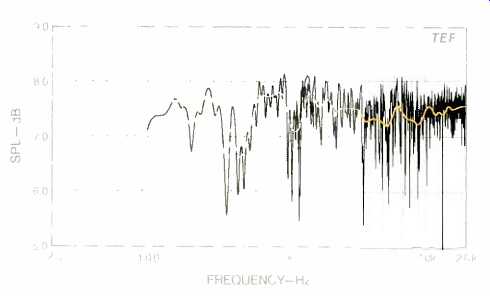
Fig. 11-Three-meter room response, showing both raw and smoothed data.
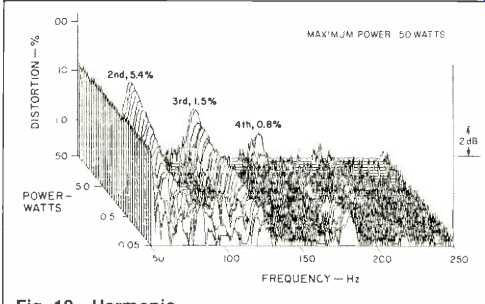
Fig. 12-Harmonic distortion products for the musical tone
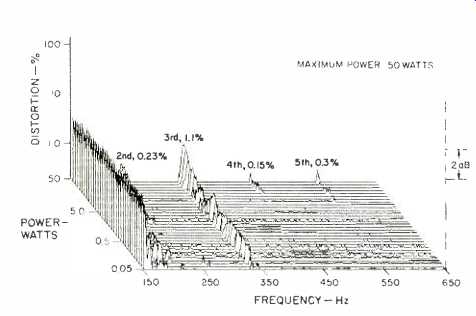
Fig. 13--Harmonic distortion products for the musical tone
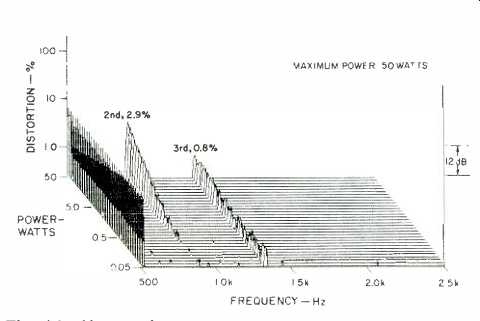
Fig. 14--Harmonic distortion products for the musical tone A4 (440 Hz).
Figure 7 shows the mean vertical responses of the 2Ci.
The vertical on-axis curve is very similar to the corresponding horizontal curve but has a slight depression between 3.5 and 8.5 kHz, near the upper crossover region. The apparent smoothness and extension of the mean vertical response is deceptive; as seen in Fig. 8, the individual curves that were averaged to yield the on-axis curve of Fig. 7 actually show extreme variations. The variation of these curves--about 10 dB between 700 Hz and 8 kHz and nearly 25 dB in some ranges--is quite evident when compared to the very tight horizontal composite in the top of Fig. 6. This response is in the upward direction and experienced clearly by standing listeners.
Overall, the 30° to 45° mean response in Fig. 7 is surprisingly uniform but exhibits some roughness and a general decrease in level as frequency increases. The 60° to 75° mean vertical response is quite rough and rolls off strongly above 7 kHz, however. As before, the individual curves that make up both these mean curves are very irregular.
As I was not familiar with the 2Ci's low-frequency system design, I was interested in finding out how well it worked. My investigation showed that it works very well indeed. A high level, low-frequency sine-wave sweep revealed a very solid enclosure with no significant cabinet resonances or air leaks. The whole assembly is quite inert! The system's woofers did not exhibit any dynamic offset effects, a good and uncommon trait.
Separate near-field measurements of the front and rear woofers revealed that the 2Ci behaves very much like a vented-box (bass-reflex) system, with the rear woofer acting as the port. In this situation, however, the rear woofer per forms the function of a passive radiator but is actively driven. I performed a second set of near-field measurements with the rear woofer disconnected, thus converting the system into a true passive radiator. (This test was not quite accurate, because the network driving the rear woofer was still connected internally to the rest of the system.) The rear woofer's bandpass response shape and location were essentially unchanged by this operation, but when reconnected, its output level was raised by about 5 dB. This corresponds to the performance of a pure passive-radiator system with an enclosure 80% larger, a nice trick! Doubling the box volume in a vented-box (or passive-radiator) system will theoretically increase the vent's output by 6 dB, assuming that the system's tuning frequency is held constant by adjusting the vent.
A vector sum of the near-field responses of the front and rear woofers indicated that the 3 dB-down point of the overall response is extended downward from 51 Hz to 43 Hz when the rear woofer is connected! You don't get something for nothing, however; the extra expense of the functional rear woofer must be considered, along with the decreased low-frequency impedance of the system and its consequently greater power draw.
At high levels, with the rear woofer connected, the front woofer's excursion exhibited a sharp reduction in displacement at the 2Ci's 38-Hz vented-box resonance frequency, a characteristic of properly functioning vented-box systems.
At and near this frequency, most of the sound energy is radiated from the rear woofer. The system exhibited minimal extraneous noises at high input levels throughout the low-frequency range. Both woofers overloaded gracefully.
The Vandersteen could handle signal levels in excess of 10 V rms (14.3 watts into 7 ohms) at infrasonic frequencies without generating any unacceptable noises. The 8-inch front woofer's linear excursion capability was a healthy 0.5 inch, peak to peak, while the 10-inch rear woofer could displace an even higher 0.6 inch, peak to peak, before sounding stressed.
The woofer-protection circuitry was triggered above about 18 V rms (46.3 watts into 7 ohms) at 38 Hz. From a cold start, at this frequency and level, it took about 20 S to engage. The woofers' level was then smoothly and quickly decreased to low levels, while the LEDs on the front panel illuminated. After a pause of 10 to 20 S with no power applied, the woofers were reconnected.
The low-frequency enclosure is filled with a white batting-like material. The complete enclosure is substantial-at least 3/4 inch thick and made from a material Vandersteen calls "multi-fiber," which appeared to be similar to high grade, medium-density fiberboard. The whole assembly is very amply braced, and the driver enclosure's side walls are mostly nonparallel.
The crossover of the 2Ci includes a substantial 29 parts:
Four inductors, 13 capacitors (effectively eight, due to paralleled elements), and 12 resistors including the two controls, plus some miscellaneous parts in the protection circuitry. Parts quality was high, and heavy-gauge wire was used to connect the drivers. All connections were soldered.
The crossover is wired on a p.c. board attached to the inside of the rear panel, behind the front woofer. The cross over consists entirely of first-order filters, with heavy use of impedance-correcting networks across each driver. Separate near-field measurements revealed that the upper cross over is at about 3 kHz.
The front woofer is high-passed at about 40 Hz with a 500-uF capacitor, while the rear woofer is low-passed at about 65 Hz with a large, iron-core, 20-mH inductor. The high and low portions of the crossover are connected to the rear panel separately to facilitate bi-wiring.
At very low frequencies (below 10 Hz, including d.c.), the front and rear woofers are 180° out of phase. When I applied a positive battery wire to the positive terminal of the system, to check the displacement and polarity of the woofers, I was surprised that the front woofer moved a fixed amount out of the box, while the rear driver moved a fixed amount into the box. This implied to me that not only were the woofers 180° out of phase, but the capacitor (which cannot pass d.c.) in series with the front driver was not working properly. (I expected an initial displacement of the front woofer, with a quick return to zero.) A call to Richard Vandersteen cleared up the apparent problem, when he emphasized that both woofers are in a tightly sealed cavity, thus coupling the two drivers closely together. The d.c. was directly displacing the rear driver inward while forcing the front driver out of the box because of the increase of pressure inside. (Dumb me!) The woofer enclosure is very well sealed, so well, in fact, that a manual push of one of the woofers causes a corresponding movement of the other woofer. This reaction continues for as long as the original woofer is displaced (or at least for several tens of seconds!).
The 2Ci's impedance from 10 Hz to 20 kHz is shown in Fig. 9. Three impedance minimums are evident, with the lowest a relatively high 4.8 ohms at 43 Hz. Above 30 Hz, in the system's passband, the impedance is very well behaved, with a max/min variation of only 2 to 1 (from 9.7 down to 4.8 ohms). Because its impedance has a relatively high minimum and little max/min variation, the 2Ci is not very sensitive to cable series resistance. Cable resistance should be limited to a reasonably high maximum of about 0.11 ohm to keep cable-drop effects from causing response peaks and dips greater than 0.1 dB. Thus, for a standard run of about 3 meters (10 feet), 16-gauge (or larger) wire is required.
The complex impedance from 5 Hz to 30 kHz is plotted in Fig. 10; it is well behaved. The phase angle of the impedance reached a maximum of only +25° (inductive) at the subsonic frequency of 10 Hz and a minimum angle of-38° (capacitive) at the bass frequency of 30 Hz. The system will be an easy load for any amplifier.
Even though Vandersteen rates the 2Ci as having a non-standard 7-ohm impedance, I assumed an 8-ohm impedance for calculating input power in the following measurements, except where stated otherwise.
The 3-meter room curve, with both raw and sixth-octave smoothed responses, is illustrated in Fig. 11. The 2Ci was in the right-hand stereo position, aimed at the listening location, and the test microphone was placed at ear height (36 inches) at the listener's position on the sofa. The system was driven with a swept sine-wave signal of 2.83 V rms (corresponding to 1 watt into a standard 8-ohm load). The sweep includes the direct sound plus 13 mS of the room's reverberation. Above 2 kHz, the smoothed curve is well behaved and fits an envelope of ±2.3 dB. Excluding the room dips at 380 and 490 Hz, the complete curve fits within a relatively compact, ±3.4 dB, window from 100 Hz to 20 kHz.
Figures 12 to 14 show harmonic distortion versus power for the musical notes of E1 (41.2 Hz), A2 (110 Hz), and A4 (440 Hz). The power levels were computed using the standard system impedance of 8 ohms (20 V rms equals 50 watts, etc.). Power levels were limited to 50 watts due to the 2Ci's built-in protection circuitry.
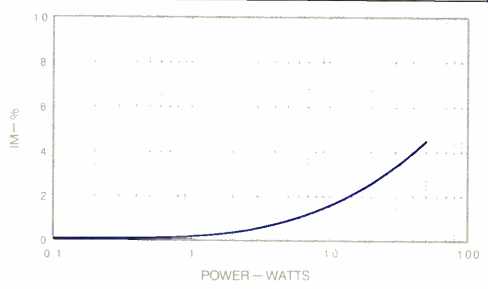
Fig. 15--IM distortion on 440 Hz (A4) produced by 41.2 Hz (E1) mixed in
one to-one proportion.
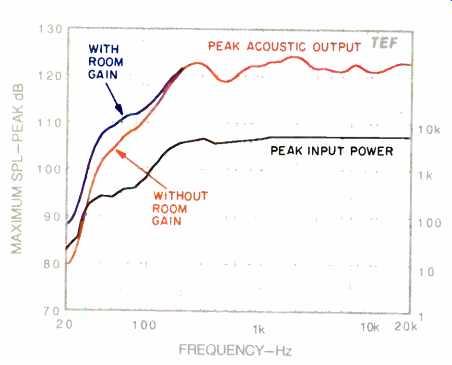
Fig. 16--Maximum input power (calculated for standard 8-ohm impedance) and
maximum peak sound output vs. frequency at 1 meter on axis.
Figure 12 shows the E1 (41.2-Hz) harmonic distortion data at power levels ranging from 0.05 to 50 watts. At full power, the second and third harmonics reach distortion levels of only 5.4% and 1.5%, low values for a system of this size.
Tone E1 coincides approximately with the system's vented-box resonance frequency, thus minimizing the distortion. The higher order harmonics were significant only at the highest power levels. At 41.2 Hz, the system generates 96 dB SPL at 1 meter for 50 watts input.
The A2 (110-Hz) harmonic data is shown in Fig. 13. The third harmonic reaches only a very low value of 1.1% at 50 watts, and the second harmonic reaches only 0.23%. The higher order harmonics are not significant. At 110 Hz, the system generates 101 dB SPL at 1 meter for 50 watts input.
Figure 14 shows the A4 (440-Hz) harmonic distortion data. The second harmonic reaches only 2.9% at full power, followed by the third at the low value of 0.8%. At 440 Hz, the system generates 101 dB SPL at 1 meter for 50 watts input.
Figure 15 displays the IM distortion on a 440-Hz (A4) tone created by a 41.2-Hz (E1) tone of equal input level. At 50 watts, the IM distortion reaches only 4.2%. The three-way configuration of the system contributes to the relatively low values of IM. The midrange mainly handles the upper frequency, while the woofer handles the lower. Overall, the 2Ci exhibited quite low values of distortion in the harmonic and IM tests.
Figure 16 shows the system's short-term, peak-power input and output capabilities versus frequency, measured with 6.5-cycle tone bursts having third-octave bandwidth. Here again, the peak input power was calculated by assuming that the measured peak voltage was applied across the standard 8-ohm impedance. The maximum peak electrical input power-handling capacity of the 2Ci is shown in the lower curve.
The peak input power rises smoothly with frequency; above 1.25 kHz, input reaches 190 peak volts, equivalent to about 4,500 watts into the 8-ohm load for which my scales are calibrated (actually, 5,160 watts into 7 ohms). From 20 to 30 Hz, the peak input power rises rapidly and then reaches a short plateau of about 300 watts just above the 38-Hz box resonance. Peak input power rises again above 100 Hz, after which a slight decrease is noted at about 400 Hz, just below the lower crossover.
The upper curve in Fig. 16 shows the maximum peak sound pressure levels the 2Ci can generate at a distance of 1 meter on axis for the input levels shown in the lower curve.
Also shown on the upper curve is the "room gain" of a typical listening room at low frequencies. This adds about 3 dB to the response at 80 Hz and 9 dB at 20 Hz. The peak acoustic output rises rapidly with frequency up to 40 Hz, and then increases less rapidly up to about 250 Hz, where a level of about 123 dB is reached. Although the system's sensitivity is on the low side, its relatively high power handling results in high peak outputs. With room gain, the system exceeds 110 dB SPL above 55 Hz and 120 dB SPL above 180 Hz. At 32 Hz, it generates a very usable 102 dB SPL with room gain.
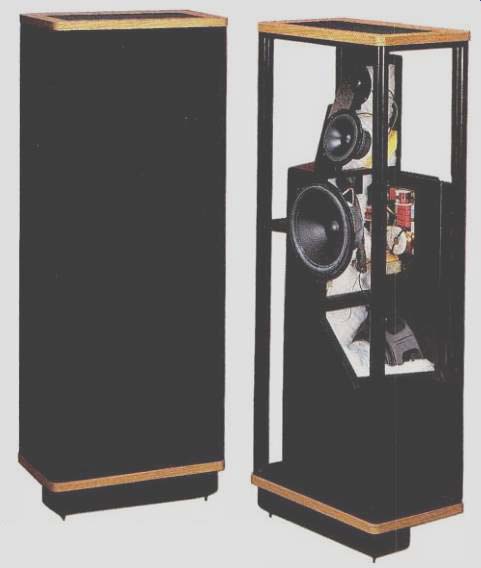
above: Construction shared by Vandersteen 2Ce (shown) and 2Ci. See text.
Use and Listening Tests
The 2Cis come with an excellent and very extensive 16 page use and operation manual that covers many different topics, including connections, placement, amplification, associated equipment, service, packing, and warranty. Also included is a very useful two-page "power-handling notice" written in an easy-to-understand question-and-answer style.
The manual devotes three pages to a section on speaker placement and sound-room design, the most extensive coverage I've seen in the manuals of any speakers I've re viewed. Also included are instructions for accurately tilting the system back, using the supplied spikes, for situations where your ears are above the designed 36-inch listening height.
In the connections section, the manual goes into much detail on the methods that can be used to attach the systems to the amplifier(s), including bi-wiring and "vertical biamping." (The latter is defined by Vandersteen as using a pair of identical stereo amps, one per speaker, with no external crossover. The amps then feed identical, wideband signals into their assigned speakers' bass and midrange/tweeter crossover sections. This lets you position each amp close to its speaker, with short cables, and keeps the amp grounds for the two stereo channels separate.) Vandersteen specifically designed the 2Ci for bi-wire or vertical biamp connection, stating, "The performance of the Model 2Ci is compromised by a mono-wire connection. The speakers should be bi-wired or biamped as soon as possible." I did most of my listening in the bi-wire mode, using a dual set of 3-meter Straight Wire Maestro cables. The connection at the speaker side was complicated by having to directly insert the cable's spade lugs into the wire holes in the double-banana plugs. I definitely would prefer a conventional terminal arrangement to the rear-mounted banana jacks, which have to be used with banana plugs. I used conventional, single wiring for casual listening; to do this, I put a double-banana plug into each double-banana jack, than paralleled the two plugs by running 2-inch, sixpenny nails through their wiring holes. I then put another double-banana plug on my cable and plugged that into the paralleled array I'd just made.
My equipment lineup consisted of my usual Jeff Rowland amplifier and Onkyo CD player. An additional CD player was the new Rotel RCD-965BX, which has one-bit D/A converters. The Vandersteens were placed about 10 feet from the sofa in my listening room and separated by 8 feet.
This placed them about 6 feet from the short rear wall and 4 feet from the side walls. The systems were canted in toward the listening position but not tilted back. The optional metal bases were filled with lead shot; they were very heavy and added a great deal of stability to the systems. Listening was done both with and without the supplied spikes. Most listening was done before the measurements.
My initial listening revealed a smooth, faithful, very listenable character, with just slightly less sensitivity than my reference B & W 801s. I did most of my listening with the driver level controls in the mid, or "0 dB," position. This yielded a balance closest to that of the 801s. Compared with those reference speakers, the Vandersteens exhibited similar high-frequency balance but somewhat less low-bass response. The level of existing bass, however, was quite ample and lent a solid foundation to organ music and double bass. The imaging and spatial characteristics of the Vandersteen systems were first-rate. All these comments apply only to the sound of the Vandersteens for listeners who are sitting down, however. When I was standing, I noticed significant tonal shifts in the upper midrange, as well as image shifts, both of which were quite detrimental to the find sound I heard when seated.
The systems reproduced the spacious hall sound on the CD of Piano Trios of Brahms and Dvorak, played by the Rembrandt Trio (Dorian DOR-90160), quite realistically while not diminishing the magnificent sound of the difficult piano passages. In addition, instrument placement was good and solid. The systems' smooth low end was exercised by the acoustic bass material on Rob Wasserman's Duets (MCA MCAD 42131, a super CD of just Wasserman's bass and the vocals of an incredible assortment of contemporary singers). Through the 2Cis, Jennifer Warnes, on track 6, never sounded better.
On third-octave, band-limited pink noise, the Vandersteens started coming on strong at the third octave centered on 31.5 Hz, and were fully running at 40 Hz. At 20 and 25 Hz, the systems generated harmonics only when driven hard. On mono pink noise, the center image was quite stable and of minimal width. Fairly major tonal changes in the middle and upper middle ranges were heard on pink noise when standing up. For serious listening, you should be sitting down.
The systems handled the complex orchestration of The Spielberg/Williams Collaboration (Sony Classical SK 45997) cleanly and provided a solid bass foundation. They did justice to the bass drum whack on the Jaws theme on track 5. The 2Cis imparted some slightly bothersome tonal changes in the mid and upper ranges of some material that my reference systems handled better.
The Vandersteens played loud and clean, with sufficient bass for rock music. This was apparent when I played Phil Collins singing "I Can't Dance" on the Genesis CD We Can't Dance (Atlantic 7 82344-2). On David Chesky's Club de Sol (Chesky JD33), the cabaga that comes in at 1:58 on track 6 is incredible and appears to hang in midair just to the right of center.
All things considered, the 2Cis pack a quite considerable amount of accurate performance and musicality in a reasonably priced and good-looking package. Their gentle impedance characteristics make them an easy load for virtually any amplifier. The Vandersteens can be used with inexpensive amplification yet speak their best when coupled with top-quality equipment. Although they won't shake your windows on heavy bass (pedal organ, for example) and are sometimes fussy with respect to listening height, overall they yield a lot of bang for the buck.
-D. B. Keele, Jr.
(Source: Audio magazine, Jun. 1992)
Also see:
Spica Angelus Loudspeaker (Sept. 1991)
Westlake Audio BBSM-6F Speaker (Dec. 1991)
Precise Monitor 10 Speaker (Sept. 1990)
= = = =